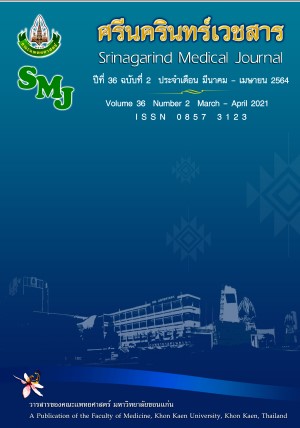Medical Model Making for Peritoneal Dialysis
Keywords:
Model for demonstrating Peritoneal Dialysis, Chronic kidney disease, Developmental researchAbstract
Background and Objective: The model is built to simulate or duplicate a real object using renewable materials in 3D. It shows details of different structures and components. Not only making the learning process easier, but also the model can be studied all the time. The model helps to learn practically to earn skills. Medical models are therefore another alternative and used as an example of clinical practice in teaching, study, medical treatment and services. Especially chronic kidney disease patients who require experts in patient care. It is necessary to bring the model for training before taking care of patients.
Methods: This study was a developmental research. 30 volunteers from relatives, caregivers of patients and peritoneal dialysis nursing instructors were the experimental groups. The study instruments were the model for demonstrating peritoneal dialysis and satisfaction questionnaires. Statistic measures for data analysis were percentage and mean.
Results: A quality of the demonstrating peritoneal dialysis model could be used to test the peritoneal dialysis process. The experimental groups learned and understood practically and had a high level of satisfaction at 4.3.
Conclusion: The experimental groups were able to learn to understand and practically use of the dialysis demonstration by using the model. Carried out on their own.
References
2. สมาคมโรคไตแห่งประเทศไทย. คำแนะนำสำหรับการดูแลผู้ป่วยโรคไตเรื้อรังก่อนการบำบัดทดแทนไต พ.ศ. 2558. กรุงเทพฯ: สมาคมโรคไตแห่งประเทศไทย, 2558.
3. ศรีเรือน แก้วกังวาน. ทฤษฎีจิตวิทยาบุคลิกภาพ. กรุงเทพ : พิมพ์ดี, 2551.
4. สุสัณหา ยิ้มแย้ม. การพัฒนาหุ่นจำลองเพื่อฝึกทักษะทางคลินิกของนักศึกษาสาขาวิทยาศาสตร์สุขภาพ. พยาบาลสาร 2559; 2: 142-151.
5. ปรียสลิล ไชยวุฒิ, เยาวลักษณ์ คุมขวัญ. หุ่นจำลองฝึกทักษะการดูดเสมหะ : นวัตกรรมสื่อการสอนทางการพยาบาล. วารสารพยาบาลกระทรวงสาธารณสุข 2560;2: 47-59.




